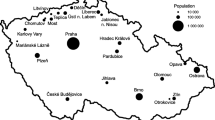Abstract
Since the beginning of twenty-first century, most nations are involved with serious issues and challenges related to urbanisation. Urbanisation is the result of rising income, the majority of which is spent on meeting the demands of growing mobility. People travel on a regular basis for a variety of physical, psychological, and economic reasons, including employment, shopping, leisure, recreation, and so on. Increased population, a high proportion of urbanisation rate, and rapid growth of private vehicles, along with rising transportation needs, are a major source of concern. The aim is to find efficiencies in Jaipur metro transportation system by using a non-parametric procedure such as data envelopment analysis. The methodology was implemented utilising a weighted sum of outputs to weighted sum of inputs ratio. Various parameters like in-vehicle travel time, out-of-vehicle travel time, ingress and egress time were calculated during the study. The findings can be used by city planners, municipal governments, transportation authorities, and others to improve the effectiveness of the Jaipur Metro system. Only a small percentage of the data set was found to be efficient. Inefficient units can further analyse their flaws in order to improve their efficiency. Despite the fact that the investigation was thorough and comprehensive, future prospects must be considered. Various other parameters, such as land area, and city population, may differ from city to city, making efficiency measurement a dynamic process.




Similar content being viewed by others
Explore related subjects
Discover the latest articles, news and stories from top researchers in related subjects.References
Census of India (2011) Population of Delhi in 2011. http://censusindia.gov.in/. Accessed 12 March 2022
Jaipur Metro Rail Corporation Limited (2018) Comprehensive mobility plan- urban transport sector assessment report for Jaipur City, vol. 1. Jaipur Metro, Jaipur
Swami M, Parida M (2015) Comparative appraisal of metro stations in Delhi using data envelopment analysis in a multimodal context. J Public Transp 18(3):29–51. https://doi.org/10.5038/2375-0901.18.3.3
Darold TB, McNeil S, Hart J (2007) Comparing the efficiency of public transportation subunits using data envelopment analysis. J Public Transp 10(2):1–16. https://doi.org/10.5038/2375-0901.10.2.1
Goel R, Tiwari G (2016) Access-egress and other travel characteristics of metro users in Delhi and its satellite cities. IATSS Res 39(2):164–172. https://doi.org/10.1016/j.iatssr.2015.10.001
Caulfield B, Bailey D, Mullarkey S (2013) Using data envelopment analysis as a public transport project appraisal tool. Transp Policy 29:74–85. https://doi.org/10.1016/j.tranpol.2013.04.006
Barnum DT, McNeil S, Jonathon H (2007) Comparing the efficiency of public transportation subunits using data envelopment analysis. J Public Transp 10(2):1–16. https://doi.org/10.5038/2375-0901.10.2.1
Krygsman S, Dijst M, Arentze T (2004) Multimodal public transport: an analysis of travel time elements and the interconnectivity ratio. Transp Policy 11(3):265–275. https://doi.org/10.1016/j.tranpol.2003.12.001
Eboli L, Mazzulla G (2009) A new customer satisfaction index for evaluating transit service quality. J Public Transp 12(3):21–37. https://doi.org/10.5038/2375-0901.12.3.2
Bhagavath V (2006) Technical efficiency measurement by data envelopment analysis: an application in transportation. Alliance J Bus Res 2(1):60–72
Wiśnicki B, Chybowski L, Czarnecki M (2017) Analysis of the efficiency of port container terminals with the use of the data envelopment analysis method of relative productivity evaluation. Manag Syst Prod Eng. https://doi.org/10.1515/mspe-2017-0001
Cheba K, Szopik-Depczyńska K (2017) Multidimensional comparative analysis of the competitive capacity of the European Union countries and geographical regions. Oecon Copernic. https://doi.org/10.24136/oc.v8i4.30
Tapia JA, Salvador B (2022) Data envelopment analysis efficiency in the public sector using provider and customer opinion: an application to the Spanish health system. Health Care Manag Sci 25(2):333–346. https://doi.org/10.1007/s10729-021-09589-7
Zhang W, Wu X, Guo Ji (2022) CO2 emission efficiency analysis of rail-water intermodal transport: a novel network DEA model. J Mar Sci Eng. https://doi.org/10.3390/jmse10091200
Michali M, Emrouznejad A, Dehnokhalaji A, Clegg B (2021) Noise-pollution efficiency analysis of European railways: a network DEA model. Transp Res Part D Transp Environ. https://doi.org/10.1016/j.trd.2021.102980
Kang C-C, Feng C-M, Liao B-R, Khan HA (2020) Accounting for air pollution emissions and transport policy in the measurement of the efficiency and effectiveness of bus transits. Transp Lett 12(5):349–361. https://doi.org/10.1080/19427867.2019.1592369
Lepchak A, Voese SB (2020) Evaluation of the efficiency of logistics activities using data envelopment analysis (DEA). Gestão Produção 27(1):e3371
Charnes A, Cooper WW, Rhodes E (1978) Measuring the efficiency of decision-making units. Eur J Oper Res 3(4):429–444. https://doi.org/10.1016/0377-2217(79)90229-7
Funding
The authors have no relevant financial or non-financial interests to disclose. No funding was received to assist with the preparation of this manuscript. Also, no funding was received for conducting this study.
Author information
Authors and Affiliations
Contributions
All authors contributed to the study conception and design. Material preparation, data collection and analysis were performed by Pankaj Sharma. The first draft of the manuscript was written by Pankaj Sharma, and all authors commented on previous versions of the manuscript. All authors read and approved the final manuscript.
Corresponding author
Additional information
Publisher's Note
Springer Nature remains neutral with regard to jurisdictional claims in published maps and institutional affiliations.
Supplementary Information
Below is the link to the electronic supplementary material.
Rights and permissions
Springer Nature or its licensor (e.g. a society or other partner) holds exclusive rights to this article under a publishing agreement with the author(s) or other rightsholder(s); author self-archiving of the accepted manuscript version of this article is solely governed by the terms of such publishing agreement and applicable law.
About this article
Cite this article
Sharma, P., Jain, J.K. & Kalla, P. A study of efficiency measurement of Jaipur metro mass transit system using data envelopment analysis. Innovations Syst Softw Eng 19, 47–60 (2023). https://doi.org/10.1007/s11334-022-00511-0
Received:
Accepted:
Published:
Issue Date:
DOI: https://doi.org/10.1007/s11334-022-00511-0




